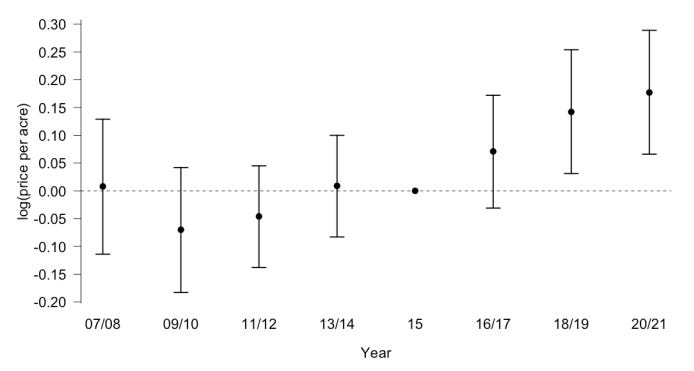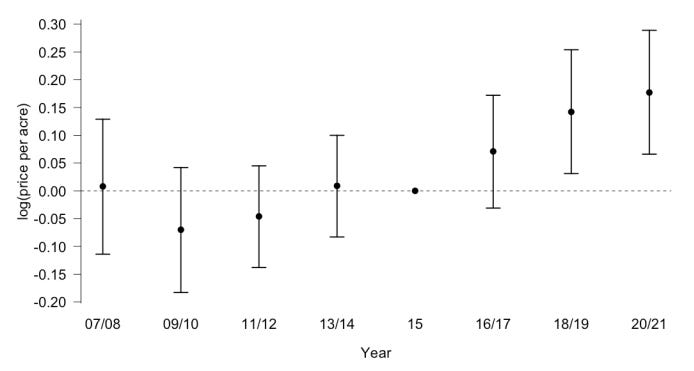
No this is not a post about the Age of Aquarius (look it up, kids…) this is a post about another unintended benefit of the rollout of renewables. A couple of weeks ago, I wrote about windfarms in Spain and how they improved the finances of Spanish municipalities. Today, let’s look at solar farms in New York State.
In 2015, New York State introduced the Shared Renewables Program (SRP), a subsidy programme that promoted the use of brownfield sites and farmland for solar farms. Using the data from 12,000 transactions in the years around the introduction of the SRP Zhiyun Li, Wendong Zhang, and Ariel Ortiz-Bobea tracked the impact these solar farms had on farmland prices in the region.
To cut a long story short, the chart below shows that the extra demand from solar farms led to an additional appreciation of farmland prices by 18% between 2015 and 2020/2021.
Impact of large-scale solar development on farmland values
Source: Li et al. (2023)
The impact on farmland prices was not the same everywhere, though. The chart above only includes parcels of land that were within two miles of an electric substation, which enables solar farms to be connected to the grid. Once you look at farmland prices more than about three miles or so away from a substation, there is no price increase visible in transaction prices. It simply becomes too expensive for developers to install solar farms that far away from the grid.
Another critical factor were local electricity prices. The US power grid is highly fractured and electricity prices can swing wildly between areas that are sometimes only a couple of miles away from each other.
I once tried to understand how the US power grid works and why it is in such a bad state, but I gave up after a couple of hours concluding that it is a hopeless mess. Kind of like the British railway system.
In any case, land prices rose even more in areas that had high local power prices. No surprises there, really. But it once again shows that if they are planned properly, renewable energy not only reduces electricity prices, but also improves the livelihoods of people who previously lived there, in this case farmers.
Maybe the press should talk about these indirect benefits some more. Renewable energy is beneficial for the vast majority of people except the ones working in oil & gas. And even then, it isn’t the end of the world since we will need a lot of peaker gas plants to help smooth the intermittency issues from wind and solar (at least until we have long-term energy storage solutions).






